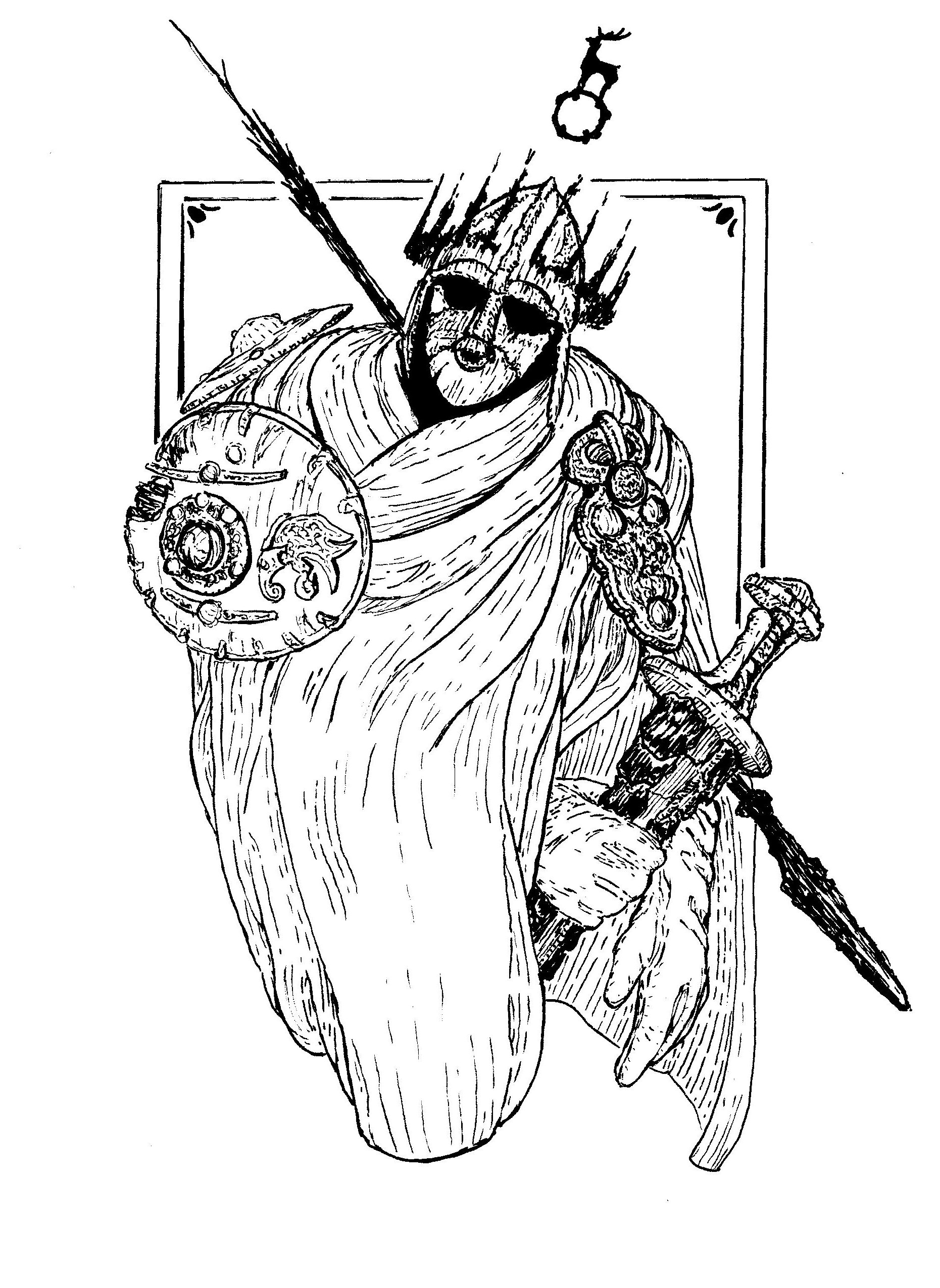More notes on That Game! Last one for a while as I work on other bits, but stay tuned.
Where we left last time we had an idea for the overall “”narrative”” framing of the campaign - fairy rescue mission - and something beginning to resemble a mechanical framing. Players leave Avalon, enter… somewhere, do Combat. Then exit the way they came, and repeat. It’s the town-dungeon-initiative trifecta.
Today, let’s have a crack at that “somewhere”, and see what other ideas might coalesce because of it!
I’m going back to some old notes for this. This is the idea for a frame I had, oh, two iterations of this combat system ago.
I was leaning away from it and trying to find something new because it doesn’t quite fit the image of the game I’d had in my head, but I couldn’t come up with anything quite as easily digestible (as I’ve said before in this little series of posts, mechanics that are good but not easy to grok are, in fact, not good).
So, we’re going to do the opposite of what we did last post, basically - change the ~lore~ to better fit this mechanic, rather than coming up with a new mechanic that better fits our currently established lore.
The mechanic in question is very much a case of me writing what I know - it’s an encounter table with a modifier that slowly ramps up, similar to things I’ve done before.
Basically:
roll 1d6 on a table of encounters. Do the encounter you roll - could be a treasure chest, a trap, or of course a Combat. Once you’ve done the encounter, add 1 to your overall “score” (call it “progress”? Or just “delve” or something? Idk). Roll, again, adding your current score. Repeat.
There will be 9 encounters on the table at first with no. 9 being the “boss”, so you’ll definitely have a few non-boss encounters before rolling that combat.
A couple of caveats:
- rolling a “unique” encounter again (i.e., a chest you’ve already emptied, a foe you’ve already slain) means you slide back down the table until you get to an encounter you haven’t done yet OR a non-unique, repeatable encounter (the same grove of mushrooms could be found over and over, f’rinstance.)
- bosses block progress. Rolling over a boss’ number means you slide back down the table to the boss - until you beat it, then you can roll higher and continue.
Oh, and you can choose to go to a numbered encounter you’ve already done at any time if it’s lower than your “score”. So you can go back and find that mushroom grotto because now you’ve explored enough to know exactly where it is.
It’s incredibly simple! But I think it needs to be. At least for me, i can only keep track of so many things at once lol
So how and why are we amending the fiction to suit this new exploration mechanic?
Well, the initial idea I’d had was a vast, forested wilderness reclaimed by nature. The fights would be in ruined castles holding out against the tide of entropy, their lords clinging to life through misplaced chivalric will.
I’d wanted a map that could be freely explored, basically. Buuut this mechanic suits a more linear progression. I guess the fiction could make sense if you don’t think hard about it (why can’t you just pass by a castle and go to the next one if you want?) but I’d prefer something that clicks more coherently. Mechanics lining up with flavour and “just kinda making sense” is a hugely powerful tool in onboarding and teaching players.
So now it’s a megadungeon! The bosses guard the stairs to the next floor down, that’s why you face them in order and can’t pass one until you’ve defeated it.
(And geez… a linear progression like this will be SO much easier to design than an open world you can tackle in any order… board games are tough)
This thing’s been getting more and more game-y, JRPG flavour and I kinda like it >:)
Thoughts about bosses, then? Well I had the idea last post of fairies in cages you could free mid-fight and I kinda like that. Makes me think of the first boss in Persona 5, where there’s a special action you can send someone to do outside of the fight. Taking time out of attacking to try a new, special, optional action is a great decision-making moment I think!
(In P5 you have to do it and the decision is who to send, but here I think the decision is more whether or not to even bother doing it, or just killing the guy and freeing the fairy after.)
So first boss is probably like… the Lord of Chains, and there’s a special action while you’re fighting him to like… turn a crank to lower a cage until you can free the fairy. But if it gets to his turn and he sees the cage lowered he’ll just yank it back up and you have to start again. Can you do X amount of heavy actions on your turn? Or should you just fight the guy?
It’s a rough idea but there’s something there. The point is that after all this noodling about lore and whatever, I now have goals to work towards with the mechanical design. Instead of just messing with the rondel system to see what can be done, I have a character to try and bring to life with it. That’ll be fun!
I’m also thinking the next boss after that is where you get the bow maybe, and you can hide behind pillars to avoid being shot by him but you have to come out to actually hit him… and the fairy cage is out in the open so you’re a sitting duck while you’re trying to free her?
(And then the fairies you free… Maybe the first is a Tinker? I don’t think we’ll be doing weapon HP after all, if nothing else it’s just annoying to track another number, but maybe she can upgrade weapons? And the second maybe gives you an “elfshot” power to your bow, that’s nice and thematic.)
Just sketches of ideas, but if I’m having all these ideas already then I think this frame is a good shout overall!
So, we’ve got our three modes of play - Avalon, Bdungeon, Combat.
Looks like a good frame to start thinking about some campaign content! I’m going to get to work tinkering on the first level, those first 9 encounters and the boss.
As I’ve said I might not be posting as frequently as I have about this project going forward, but there will still be updates - and even if this ends up just being a thing i make for me, I’ll cobble something together so that you’ll all be able to play it too once it’s done :)


